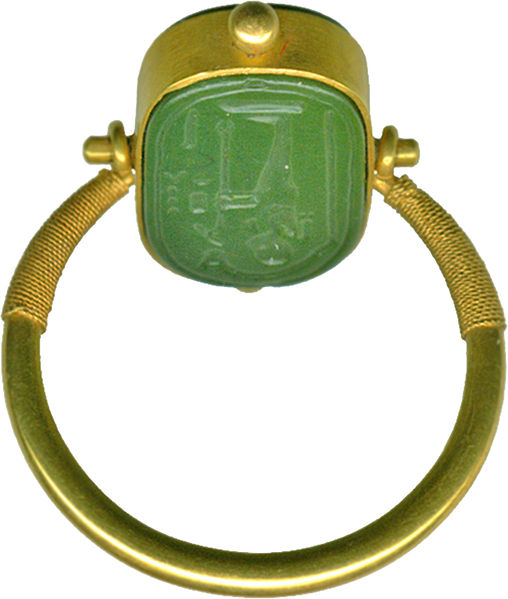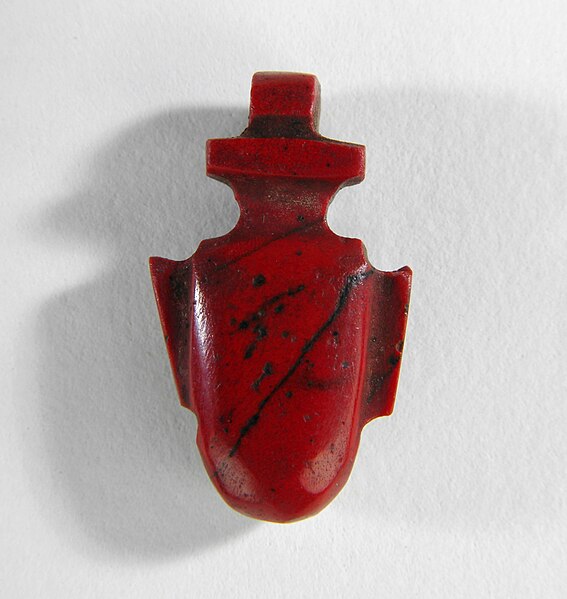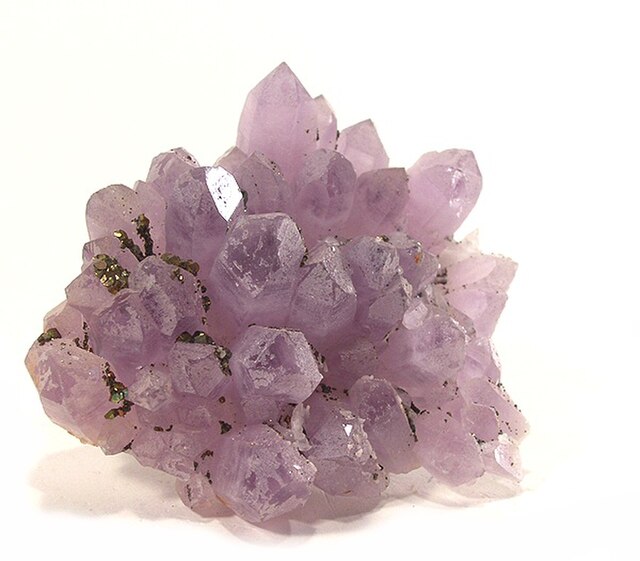Jasper, an aggregate of microgranular quartz and/or cryptocrystalline chalcedony and other mineral phases, is an opaque, impure variety of silica, usually red, yellow, brown or green in color; and rarely blue. The common red color is due to iron(III) inclusions. Jasper breaks with a smooth surface and is used for ornamentation or as a gemstone. It can be highly polished and is used for items such as vases, seals, and snuff boxes. The density of jasper is typically 2.5 to 2.9 g/cm3. Jaspillite is a banded-iron-formation rock that often has distinctive bands of jasper.
Jasper outcrop, Bucegi Mountains, Romania
Movable Egyptian ring in green jasper and gold, from 664 to 322 BC or later (Late Period), the Walters Art Museum
Amulet of scarlet jasper, provenance unknown, Royal Pump Room, Harrogate
Low-relief sphinx pendant, red jasper, pearl and enamel, French, circa 1870
Quartz is a hard, crystalline mineral composed of silica (silicon dioxide). The atoms are linked in a continuous framework of SiO4 silicon–oxygen tetrahedra, with each oxygen being shared between two tetrahedra, giving an overall chemical formula of SiO2. Quartz is, therefore, classified structurally as a framework silicate mineral and compositionally as an oxide mineral. Quartz is the second most abundant mineral in Earth's continental crust, behind feldspar.
Quartz crystal cluster from Brazil
Sceptered quartz (as aggregates: "Elestial quartz")
Prismatic quartz with black hematite
Druse quartz








